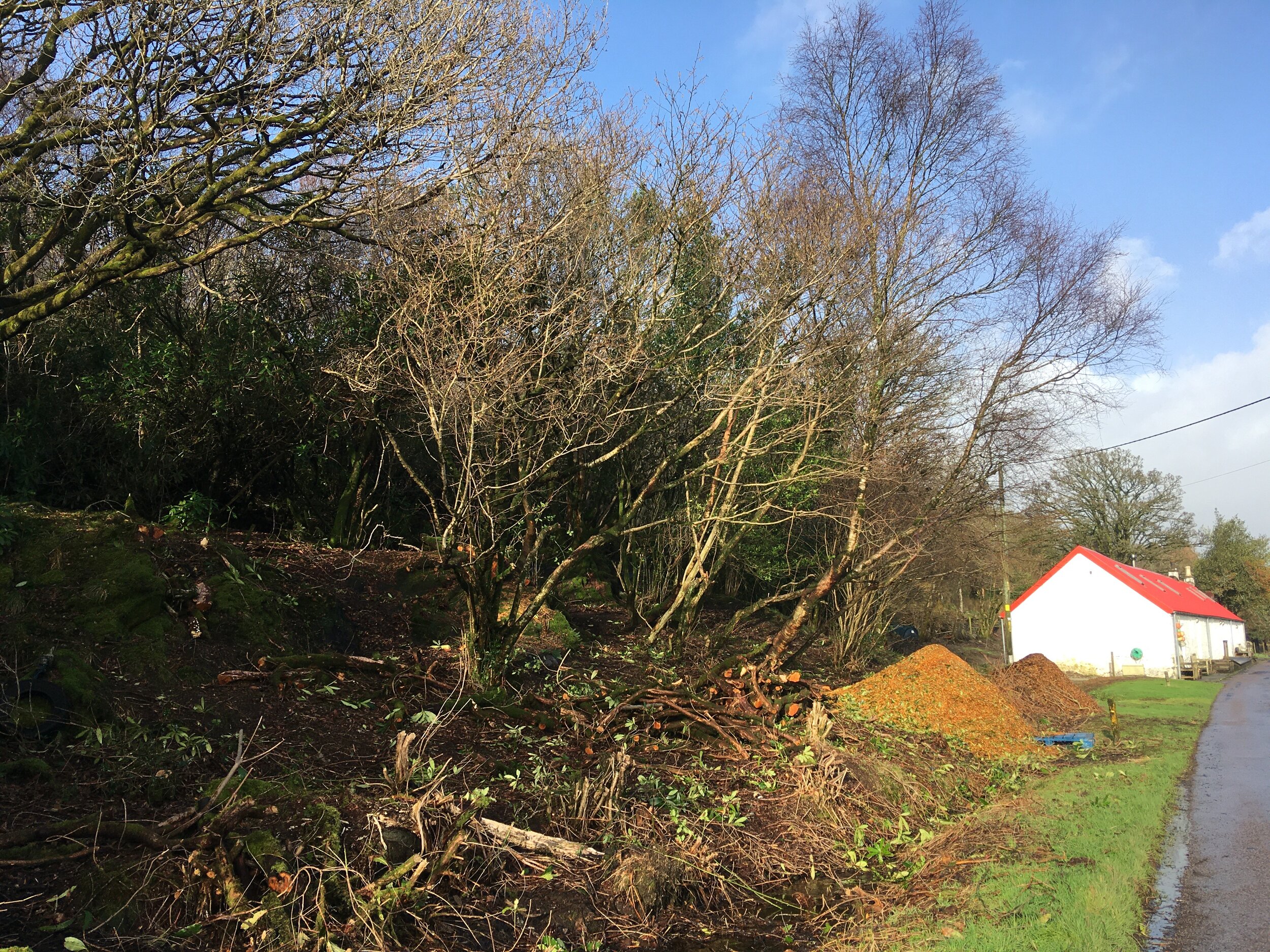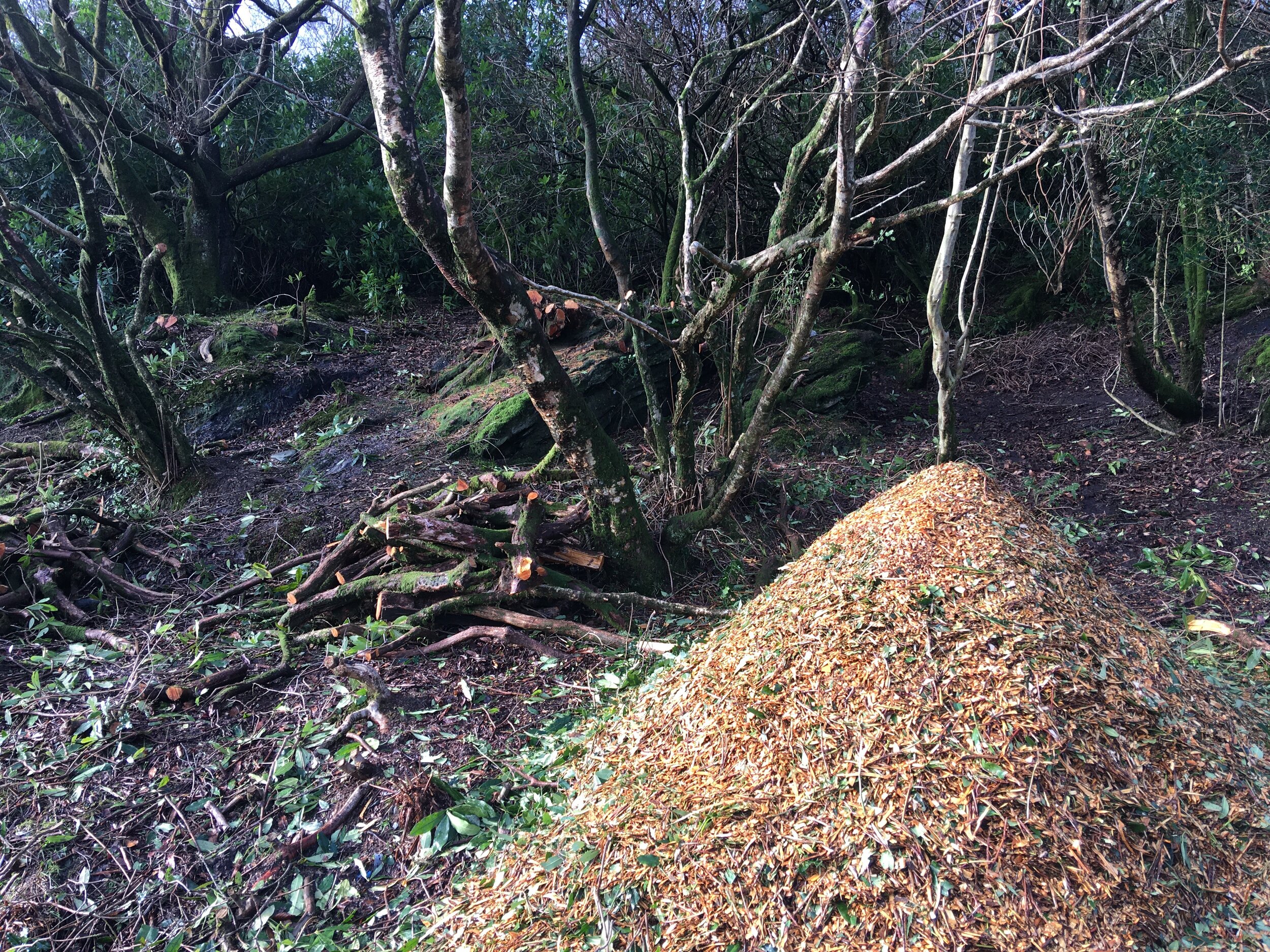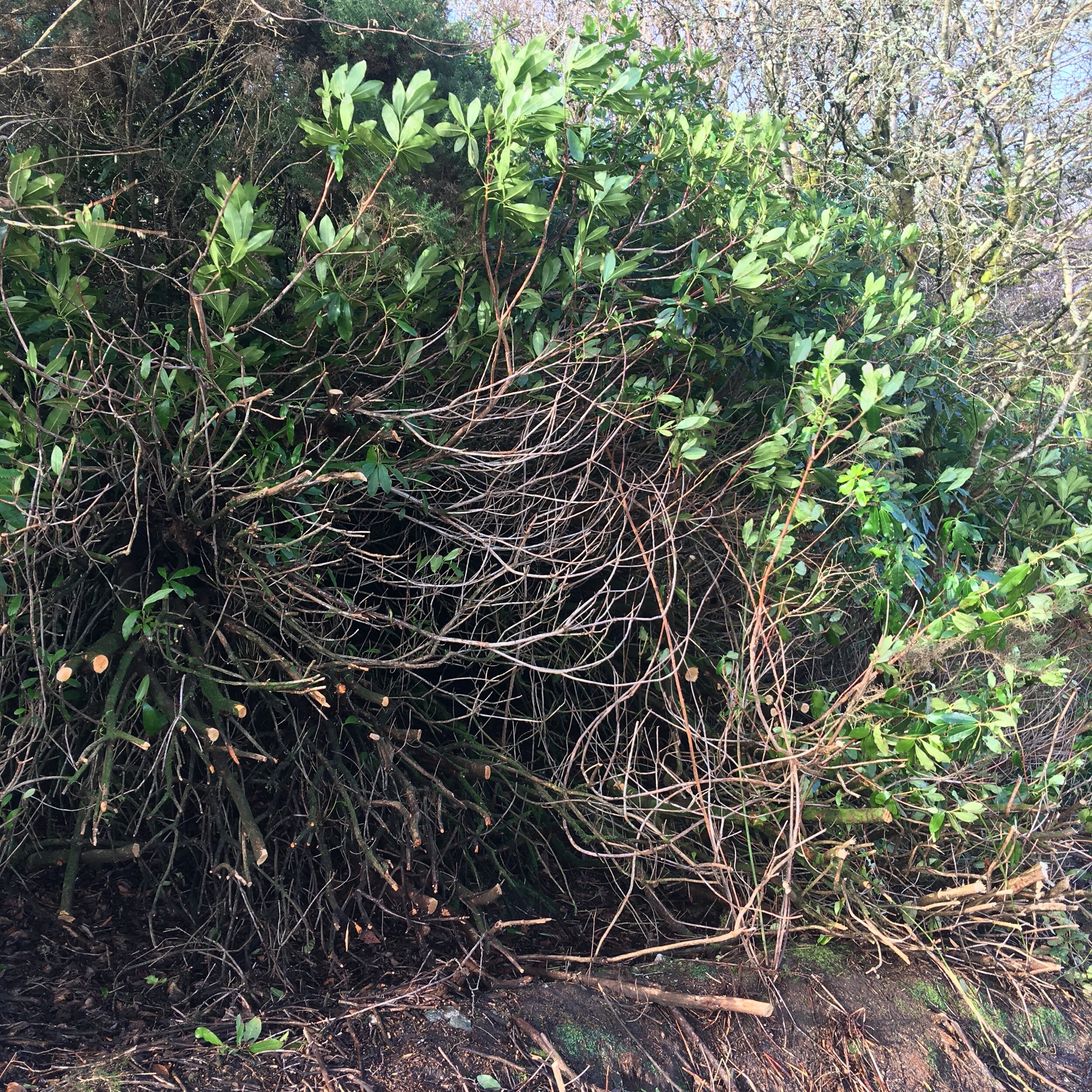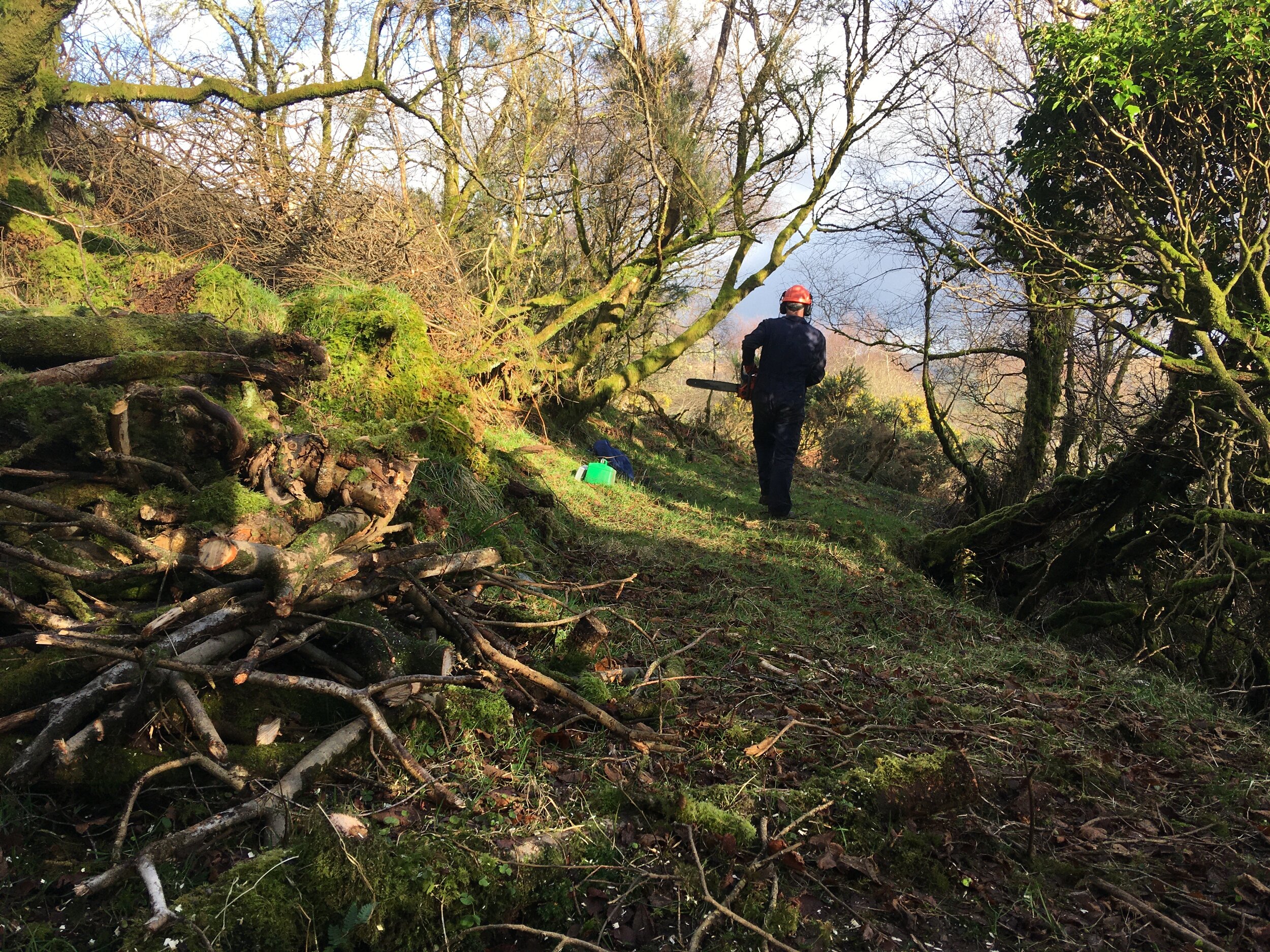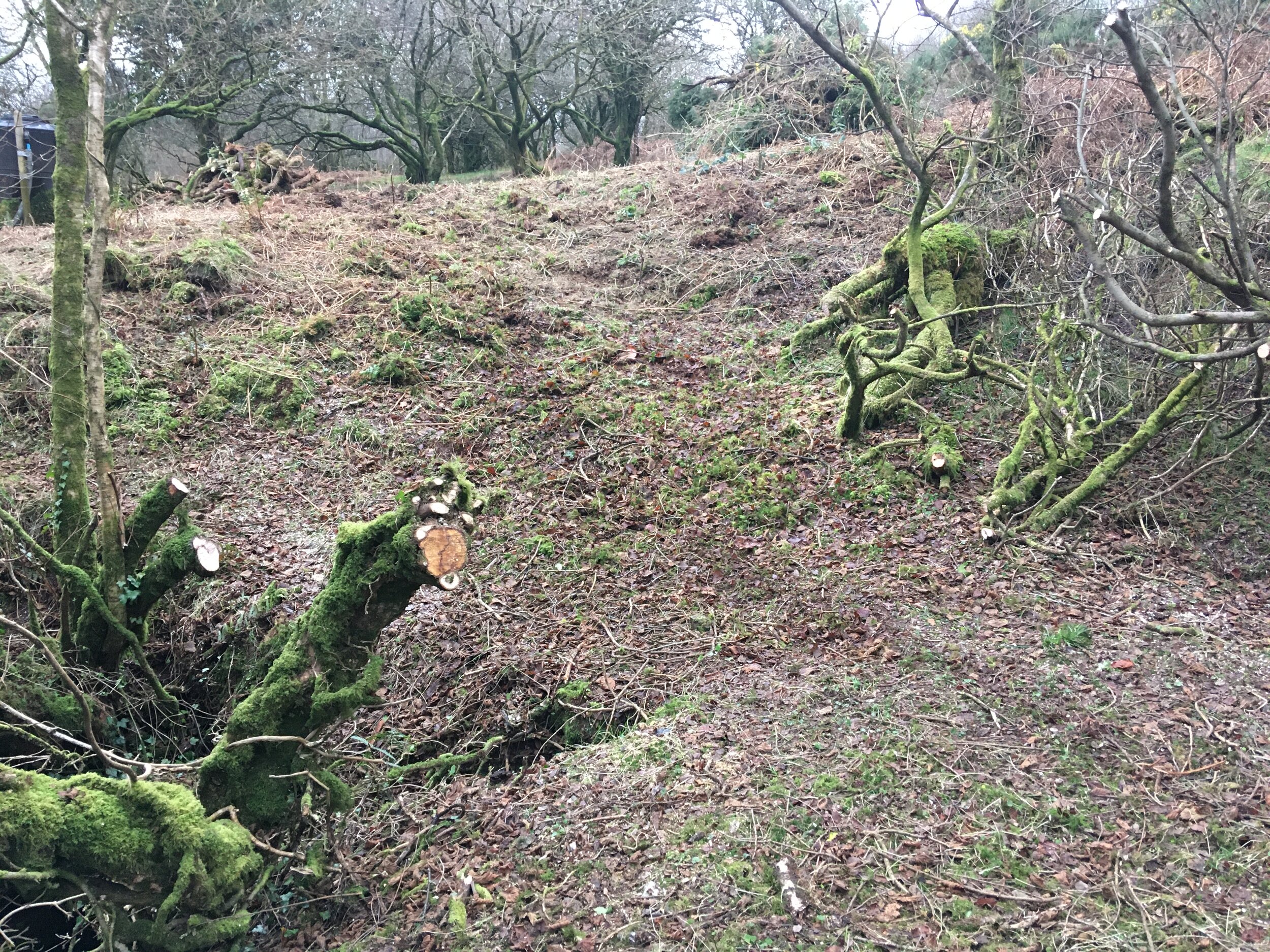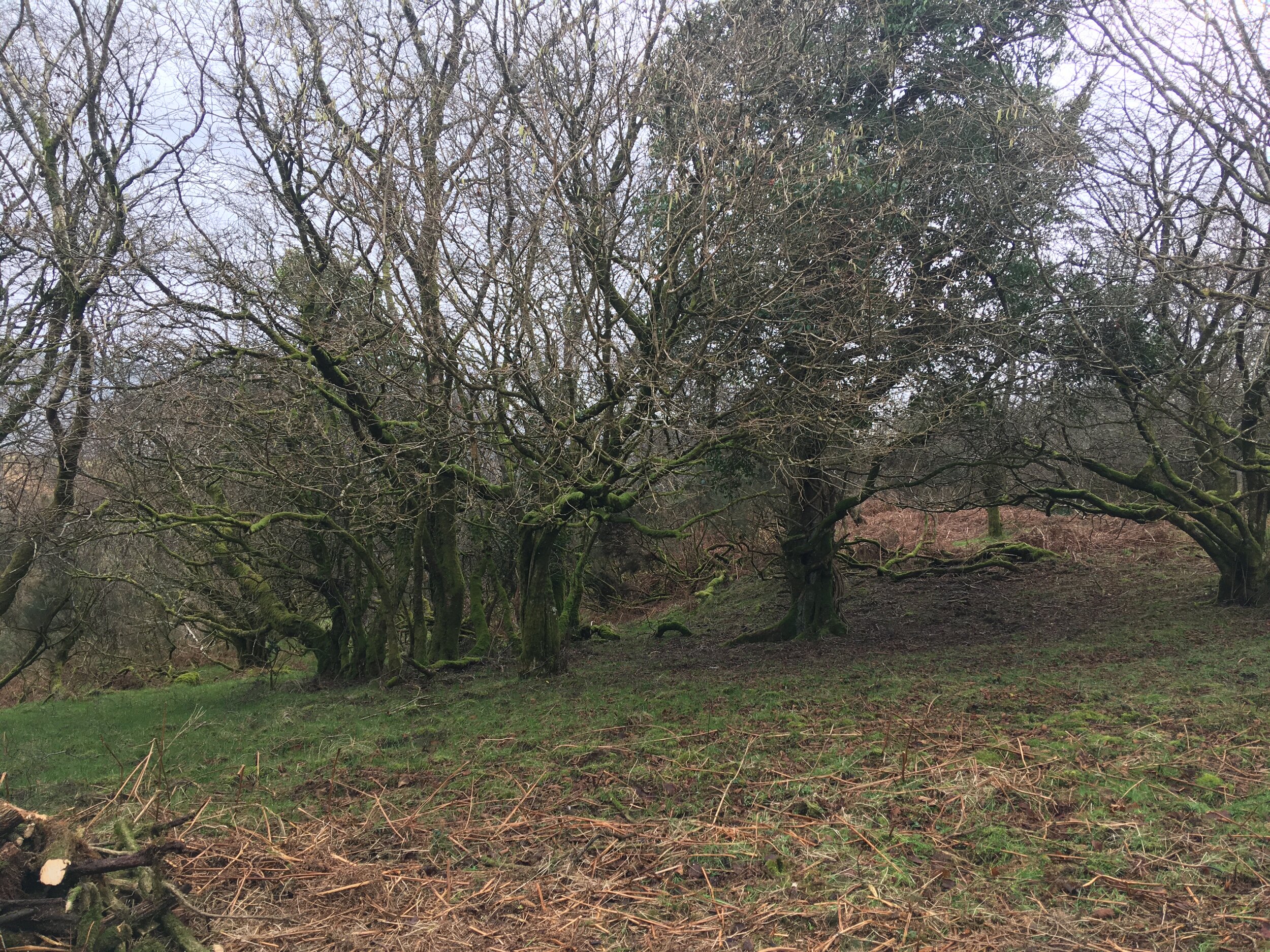Managing Carry Farm’s woodland.
Winter is a lovely time of year to be working in the woods. The under growth has died back, the dried bracken has flattened and the light easily reaches the forest floor through a canopy void of leaves.
Carry Farm has approximately 10 acres of woodland, mostly birch and hazel, interspersed with some majestic oaks, beech, alder, holly and hawthorn. If you walk around our point at this time of year and look back towards the woods, the purple hue of the silver birch is at its best. A natural pioneer species, silver birch seeds freely and is able to colonise open land. This is best displayed on our heath where a small colony of silver birch has seeded and matured since we came to Carry Farm over 23 years ago.
The woods visible behind the farmhouse.
Birch woods have a lovely light and open canopy, providing the perfect conditions for grasses, mosses, wood anemones, bluebells and wood sorrel to grow. Spring is the perfect time to wander in our woods.
Luckily, we also have three large oak trees that support more life than any other native tree species in the UK; even their fallen leaves support biodiversity. They are host to hundreds of insect species, supplying many birds with an important food source and in autumn, mammals such as squirrels, badgers and deer feed on acorns. All of the above we have in abundance.
It may surprise some that Britain remains one of the least-wooded countries in Europe. Our woodlands were once shaped by natural processes, like grazing from bison and other large mammals. In their absence, the right management is required to keep our woodlands diverse and full of life. By managing Carry Farm’s wood sustainably, we are hopefully nurturing a habitat that is brilliant for both wildlife and people.
Part of our management of the woods involves eradicating the invasive rhododendrun species which can have a dramatic impact on the woodland ecosystem by suppressing native ground flora and the natural regeneration of trees and shrubs. Plant diversity is seriously affected in areas where it becomes established.
This winter we invested in a chipper which we have put to use alongside a bill hook, chainsaw and good old fashioned manpower to make progress into our rhododendron eradication. Starting at the south side of the farmhouse where they have colonised a large area surrounding an old oak tree, we are beginning to make a difference and hope the forest floor slowly recovers as light reaches it for the first time in a while.
We are slowly improving access by clearing fallen trees from an old track to ‘Wannafanach’, the area behind the lodges to the south of Carry Farm. The wood cleared from the path has been stacked in piles, brilliant for all manner of wildlife. Holes that form where old broken branches have rotted provide crevices for bats to roost. Anyone that has spent time at Carry Farm between May and September will have noticed the abundance of bats at dusk as the maternity roosts leave for an evening of feeding.
Ultimately, we are trying to ensure a mix of dead wood, healthy live trees, young saplings and open spaces, and in doing so creating a woodland habitat with a high level of species diversity.
Hopefully, we can work towards opening up pathways in the woods to give everyone access to this very special part of Carry Farm.




